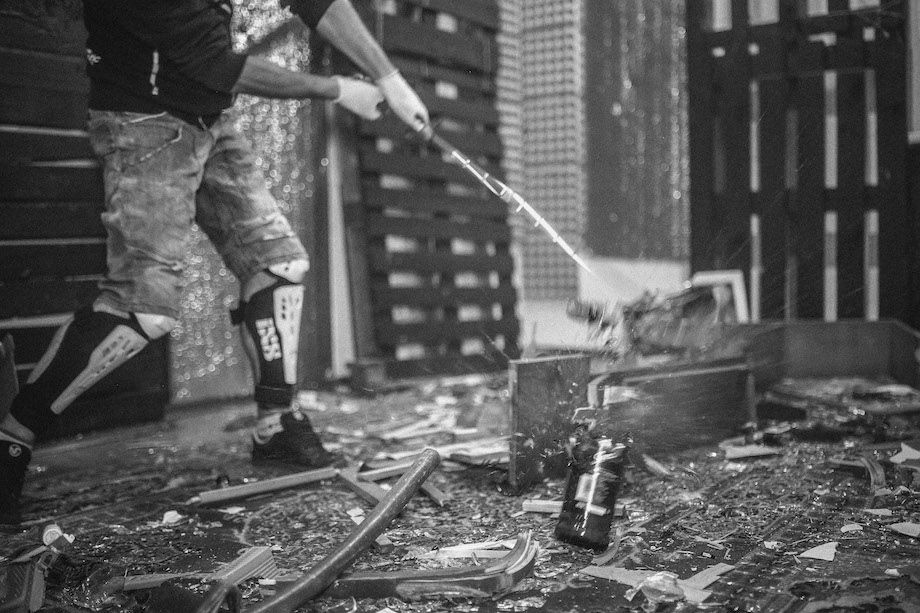Discover how unleashing anger could help unlock deeper healing
Last week, I wanted to throw a tantrum. I had just moved house and was surrounded by boxes stacked across every surface. I couldn’t find the spoons, I couldn’t find the bin bags, I couldn’t find the phone charger, the cat was trying to break into the freezer box, and then I tripped and knocked my head on the bannister rail. In that moment, I wanted to stamp my feet, and push over a couple of those damn boxes. Instead, I followed the advice I’ve written about so often in Happiful: I sat, took some deep breaths, and did what I could to calm down. But is automatically suppressing anger and frustration always a good thing?
“We humans experience a broad range of different emotions, but none of those are more demonised than anger,” Tom Bulpit, a counsellor and psychotherapist, says. “Rage is a natural feeling that is often triggered when we’ve been deeply hurt; that level of anger speaks to a deep level of pain within us. There’s a part of us that might want to release that rage, and let that dark, destructive force rip out of us at everything around us. We might even want to break stuff, or hurt people, or simply reflect back the injury we feel that has been done to us. But there’s often another part of us that is desperate to also keep that rage in, and to suppress it rather than let it out.”
As Tom explains, many of us have been taught from childhood that anger is a negative emotion that isn’t generally socially acceptable. And because of those lessons, we can then sense a degree of shame around feeling anger, which really muddies the water when it comes to expressing those emotions.
“Shame tries to tell us that what we’re feeling is somehow wrong, and we can deny it to ourselves, but it can be equally destructive as we instead internalise our suppressed anger, and the pressure instead just builds up within us – hidden – and damages us silently. If anger is not dealt with in a healthy way, it can manifest as depression instead, and greatly affect our relationships.
“Demonised or taboo feelings of anger are particularly problematic in certain demographics, including men, women, and certain ethnicities; with the risk of appearing as ‘the angry Black man’ who might turn violent, or as a woman who isn’t focused on being agreeable or ‘nice’ all the time. Yet our anger comes from a real place, and the pain we feel is valid. Suppression doesn’t change anything, but it harms us in the long-term, or risks enabling those whose behaviours might have wronged us,” says Tom.
Enter the rage room
Scream therapy (dedicating some time to screaming, and letting it all out) and rage rooms (rooms you can hire to break plates, take a bat to the walls, and generally just break things) are an alternative way of processing ‘negative’ emotions. And there’s a theory to back them up. Screaming, for example, triggers our survival instinct, which then floods our bodies with endorphins – it’s why swearing when you’re hurt can actually help with the pain. But how does that go down in practice?

“I was living in Tokyo in 2008, anger rooms originated in Japan around that time, and I remember hearing of a Tokyo smash room, where people could go to break plates and cups,” says Carmen Wong, a blogger who writes about Japanese pop culture at lacarmina.com. “Around that time, Japan also debuted a bizarre arcade game called ‘Super Table-Flip’. The screen shows you an annoying scenario (a naggy family, a bad day at the office), and lets you pound on, and flip over, a plastic table to score points!”
As Carmen explains, she didn’t find it surprising that rage rooms originated in Japan, where many people deal with a lot of work stress and social pressure, resulting in many other escapist outlets. But she was intrigued enough to give one a go.
“I was intrigued by the wide variety of tools available to break things, including a metal crowbar and sledgehammer! The room was also decorated in a horror movie theme, with bloody pentagrams on the walls. I suited up in protective gear that included heavy gloves and eye goggles, to protect myself from flying shards. Then, for 30 minutes, I went at it: smashing vases, TV screens, furniture, glasses, you name it. It was fun to let loose and yell, and break everything in sight.”
Afterwards, Carmen remembers feeling a rush of adrenaline, followed by relief – like going on a roller coaster or skydiving.
What does the expert think?
“Scream therapy and rage rooms are relatively new concepts in a very angry world. Yet, as humans, we’ve already found ways to manifest anger healthily for a long time, such as contact sports, martial arts, or music. But these might not always be accessible,” Tom says. “So the idea of just being able to anonymously book a room and smash sh*t sounds pretty appealing.
“As a therapist, my only advice would be to make space for what might come after anger. Anger often comes from a place of hurt, and we don’t like feeling vulnerable, so our rage response can be a way to mask that vulnerability. Once that mask has been spent, we might have to then sit with that raw, unprotected feeling of pain, and that might suck for a while.
“After using a rage room or similar activity, it’s totally OK if we need to have a good cry. Being mindful of the need for high quality aftercare is something worth planning in advance for anyone thinking about booking a rage room; perhaps you could arrange for a friend to call you after, or make sure you have no other plans so you can go home and recharge. For those who feel ready for it, seeking the support of a qualified counsellor is a great way to navigate these emotions.”
Where to put those feelings
On reflection, it probably was a good thing that I didn’t push over any cardboard boxes that day – a toppling tower of fragile things and a free-roaming cat isn’t exactly a controlled environment. But perhaps I should have let those emotions sit for a bit longer; they were trying to tell me I was overwhelmed and in need of help.
And maybe it’s time we all reflected a bit more on our relationship with rage. Screaming into a pillow, going for a pounding run, listening to the suitably explicit ‘Break Stuff’ by Limp Bizkit on full volume, or booking ourselves in for a rage room – let it rip, it could be the start of some deeper healing.
If you would like to seek support with navigating your emotions, find out more on the Counselling Directory or speak to a qualified counsellor.


Comments